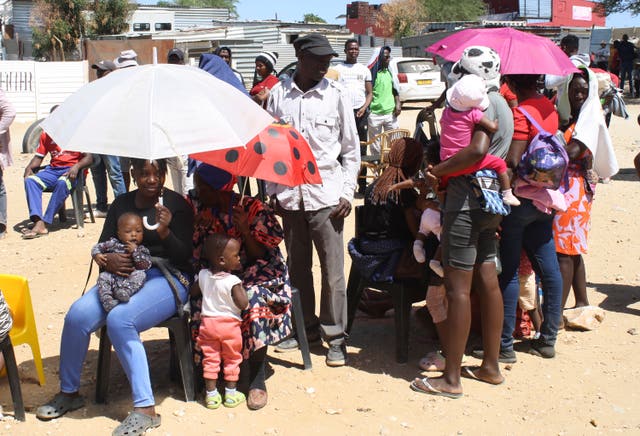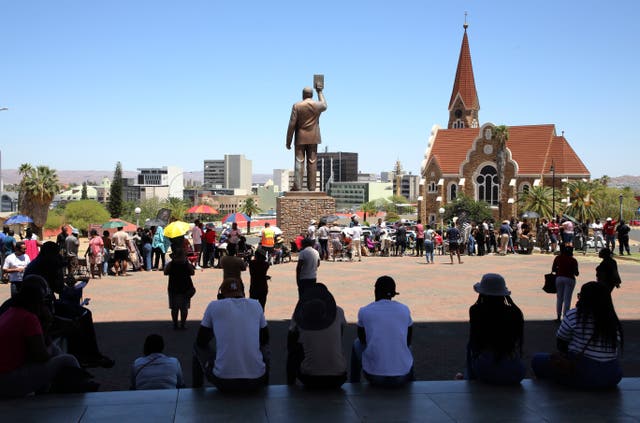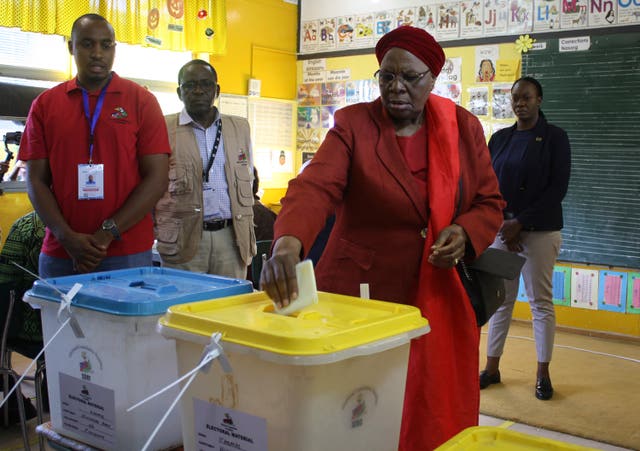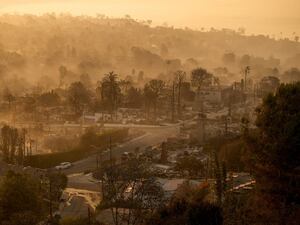Namibia poised to elect first female leader
Netumbo Nandi-Ndaitwah is in the lead in early voting.

A 72-year-old woman who joined Namibia’s underground independence movement in the 1970s is a strong contender to become its first female leader as the country voted in a presidential election.
Netumbo Nandi-Ndaitwah is the current vice president and the ruling Swapo party’s candidate for the top job. She is already in the lead after special voting among citizens overseas and the armed forces.
But Swapo, which has governed the southern African country and held the presidency for 34 years since independence from apartheid South Africa in 1990, faces growing frustration caused by high unemployment and economic hardship, especially among young people.
That is a common theme that has led to momentous election upsets in other countries in the region this year.
Voters elsewhere in southern Africa have rejected parties that liberated their nations from colonial or white minority rule in favour of era-ending change to address new problems.

Botswana’s ruling party lost in a landslide last month after 58 years in power since independence from Britain, and Mauritius delivered a surprising heavy defeat for its incumbent party this month.
Mozambique’s long-ruling Frelimo party was declared the winner of an election in October, prompting claims of vote rigging and sparking ongoing violent protests against the party.
About 1.4 million people – approximately half the Namibian population – are registered to vote to decide the president and the makeup of Parliament for a five-year term.

While Namibia’s population is 85% Black, its colonial history is illustrated by large white and biracial communities, and English, German and South Africa’s Afrikaans language are all spoken.
Ms Nandi-Ndaitwah voted at an elementary school in the capital, Windhoek. She told reporters that one of her party’s key focuses to fight poverty was attracting more foreign investment to a country with diamond and uranium resources, and untapped oil and gas off its coast that is being explored by international energy companies.
“There should be a balance to make sure that the Namibian people, who are the owners of these resources, benefit from them,” she said.
Fourteen other candidates are also running for president, including Panduleni Itula, a former dentist who was Swapo’s closest challenger four years ago when he ran as an independent.

Polls close at 9pm local time (7pm GMT) and results are expected by the weekend.
President Hage Geingob died in office in February and his vice president, Nangolo Mbumba, became head of state.
While Ms Nandi-Ndaitwah represents the rare chance for a female leader in Africa, Swapo’s popularity has slipped and it won the presidency with its lowest share of the vote ever in the last national election in 2019.
Ms Nandi-Ndaitwah, who received part of her education in the then-Soviet Union while in exile during the fight for independence, has promised to create more jobs and tackle the 20% unemployment rate for young people and graduates.

Opposition candidate McHenry Venaani, the leader of the second biggest party in Parliament, said Namibians should recognise it’s time for change.
“Botswana has done it, South Africa has done it, Mauritius has done it. Namibia can also bring about change,” he said. “People have no water, people have no houses, people have no electricity. For 34 years.”
Issues affecting women, including reproductive rights, equal pay and health care, are also likely to rank high for voters in a country that has the Kalahari Desert running through its centre and the Namib Desert along its coast and has one of the sparsest populations in the world.
Just over three million people live in Namibia, which is more than twice the size of Germany.
Those deserts make it one of the driest countries in southern Africa. It is vulnerable to climate shocks, like an El Nino-induced drought that parched the region this year. As a result, Namibian authorities announced they would kill hundreds of wild animals to provide food for hungry people.





